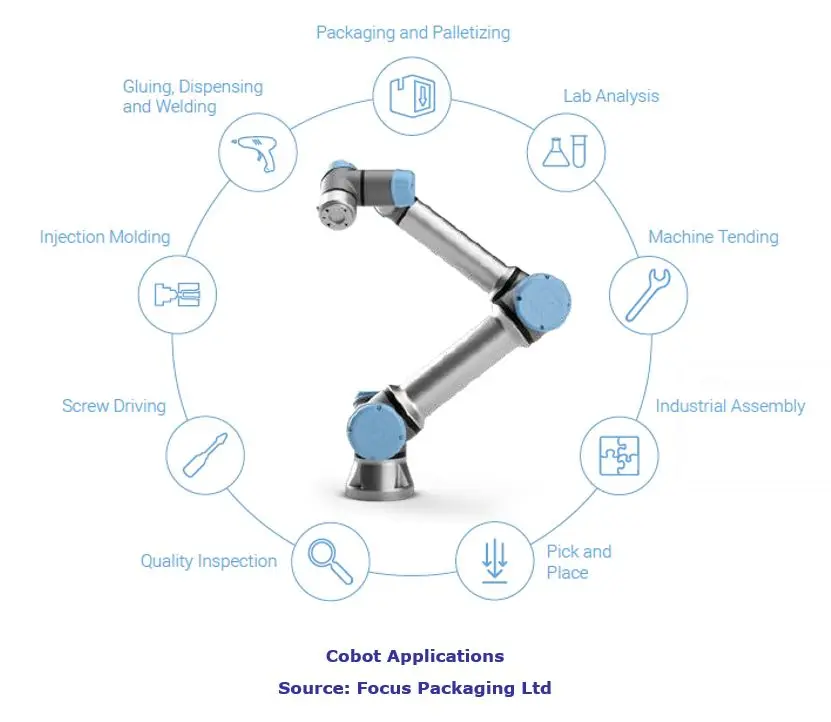


Collaborative robots are one of the latest technologies that revolutionize the automation industry. Unlike their industrial robot counterparts, cobots are designed to operate in proximity with human operators while addressing productivity challenges, such as throughput, quality, efficiency, and accuracy. The elimination of the installation of safety safeguards in the factory space is a key advantage for using a cobot solution, as manufacturing flexibility, smaller factory footprint, and quicker redeployment can be achieved to adapt to the market and supply chain uncertainties. Cobot safety may rely on lightweight construction materials, rounded edges, and inherent limitation of speed and force, or on sensors and software that ensure safe behavior.
Collaborative robots are typically smaller than industrial robots, as they are designed to provide flexibility. Placement of a collaborative robot can be easily rearranged as most of them are light enough to be moved without a problem. Depending on what kind of end effector is installed, the robot can be very flexible and assist with a multitude of tasks from palletizing to quality inspection.
Moreover, end effectors featuring advanced vision and sensor technologies enable the robot to carry out tasks with human-like dexterity and precision. Collaborative robots are very suitable for a high mix/low volume production due to their ability to be redeployed for new processes. In addition, more and more collaborative robots are starting to come with self-installing software, meaning that personnel without technical backgrounds can install and set up the robot to handle different tasks.
Cobots can have many uses, from information robots in public spaces (an example of service robots), logistics robots that transport materials within a building, to industrial robots that help automate unergonomic tasks, such as helping people moving heavy parts, or machine feeding or assembly operations.

Collaborative robots are most often found in manufacturing companies, and their size and flexibility make them ideal for automating a multitude of processes, allowing businesses of almost any size to increase productivity, improve quality, and swiftly respond to changing customer demands. They are commonly seen in:
Pick & Place operations
Packaging & Palletizing
Surface finishing
Assembly operations
Machine Tending
Quality testing & Inspection
Because cobots can be utilized across different processes, there is the possibility of a faster ROI. Some collaborative robots reportedly have a payback period as short as 200 days.


